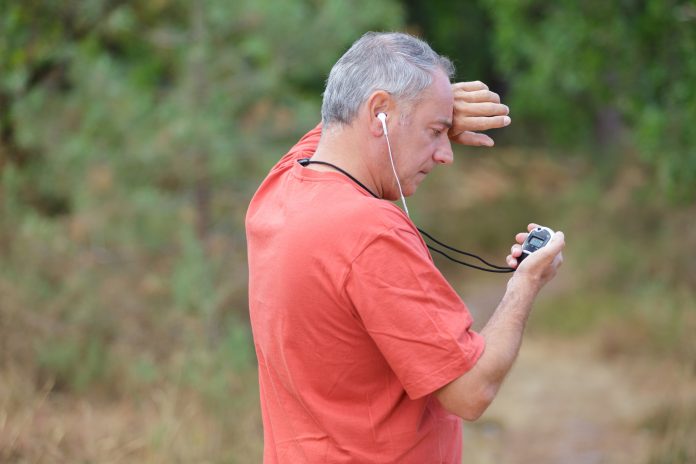As we get older, our bodies will naturally change. Things start to slow down and it takes more of an effort to get things done. This can be especially true about exercise.
The thought of going to the gym for an hour a day is not the first thing that many over 40 years old’s think about or may even consider!
That’s why High-Intensity Interval Training (HIIT) has become very popular with the middle-aged people of the world. It can be done a lot quicker, often 10-20 minutes a day, which means we have time to get on with our normal activities without exercise becoming a huge focus.
HIIT workouts for over 40-year-old’s are not only quick to do but also seriously effective at burning calories. When balanced with a healthy diet, the combination of both can keep the weight off and make sure we remain in good shape.
HIIT Cardio Over 40
HIIT cardio workouts are awesome because they can burn fat. And when we get into our forties, that’s one thing we all need to pay attention to. Belly fat can often appear from nowhere, so it’s important we exercise to burn as many calories as we can. And HIIT workouts are ideal for that.

What Exactly Is HIIT?
HIIT workouts rely on having intervals of high intensity, mixed with lower intensity. For example, lets say you sprint really fast for 10 seconds, then jog for 10 seconds, then sprint for 10 seconds. Repeat that process and that is what HIIT is all about. Naturally it doesn’t have to be running, it can be most exercises. The main thing is to have those intervals of both high and low intensity.
It works well because it helps to increase the metabolic rate of the body. And also helps to improve the health of our hearts too, at the same time.
An Example Over 40 HIIT Workout
As mentioned, choose an exercise you like, whether it be cardio or strength training. Then do the following:
- 2-3 minutes of warming up
- 20 seconds of a high-intensity exercise
- 20 seconds of a low-intensity exercise
- Repeat this 10 times
- 2-3 minutes of cooling down
If you get through that and feel like you can do even more, then repeat the whole cycle.
Once your body gets used to the training, you can increase the time for each exercise to 30 seconds and repeat the cycle as many times as you can take it. Just always remember to warm up and cool down properly. The older we get, the easier we can injure ourselves.
HIIT Training Over 40 Additional Exercises
Another thing to keep in mind is that muscle loss will naturally occur with age. This means a few things:
- We become weaker
- Muscle burns calories, so the less we have, the fewer calories we burn daily
Therefore, adding strength training into your weekly workout schedule is just as important as the cardio workouts. By building up your muscle size, it will keep you strong and burn more calories.

No need to bulk up, lean muscle is what you should aim for.
Best HIIT Workout Over 40
The best type of HIIT workout you can do if over 40 is one that combines both HIIT training and also strength training too. You can alternate the days if you choose and plan something like:
Monday – HIIT
Tuesday – Weight training
Wednesday – HIIT
Thursday – Weight training
Friday – HIIT
Saturday – Weight training
Sunday – Day off (you’ve earned it!)
That balance will keep your metabolism going strong and means you won’t be overdoing it, which can cause an injury.
On the days where you weight train, alternate between muscle groups too. One day do your upper body, next time do your lower body. It’s important we make sure we cover all muscle groups to make sure we remain fit and healthy.
Summary
HIIT workouts for over 40-year-old men and women, when combined with a well-balanced diet and weight training will keep you in good shape. No need to spend an hour on a treadmill, when 20 minutes at home will be more effective!
Here’s a 20-minute cardio HIIT workout video you can copy:
Obviously, before starting any new exercise regime you should consult with your doctor first to get their go-ahead.










